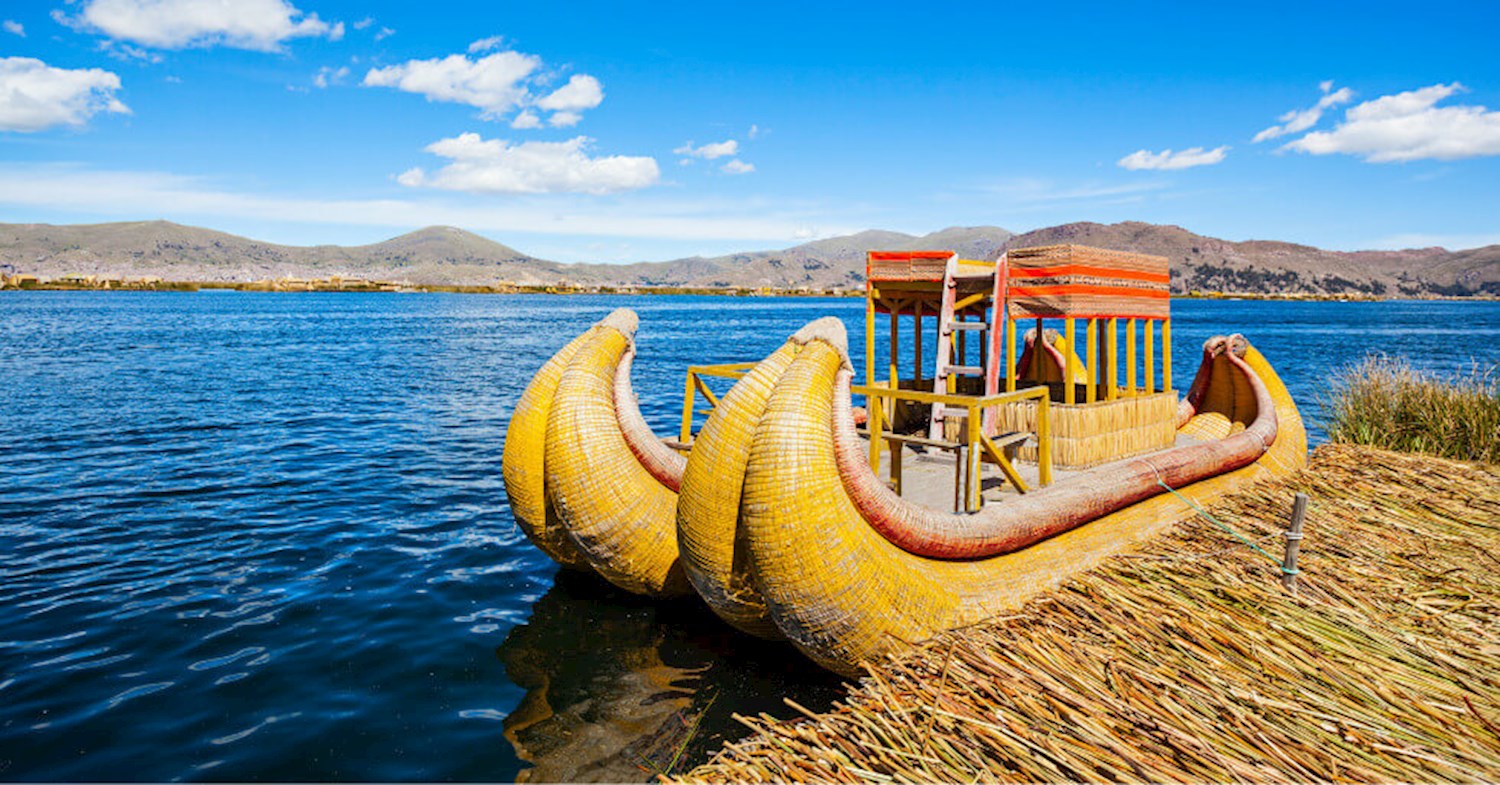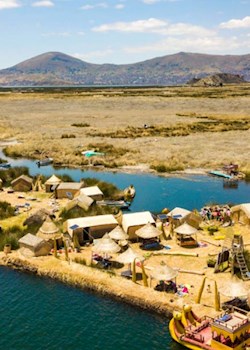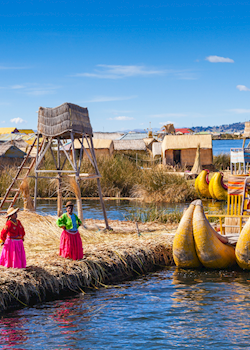Attractions
Be moved by the culture of Titicaca's Reed Islands
Lake Titicaca, straddling the border between Peru and Bolivia in the Andes Mountains, is one of South America's largest lakes and the world’s highest navigable body of water. Said to be the birthplace of the Incas, it’s home to numerous ruins. Its waters are famously still and brightly reflective. Around it is Titicaca National Reserve, sheltering rare aquatic wildlife such as giant frogs.
more
Be moved by the culture of Titicaca's Reed Islands
PERU // Meeting the Uros people of Lake Titicaca is a moving encounter - partly because the artificial floating islands they live on bob a bit, but mostly because theirs is an existence that's absolutely unique. The Uros pre-date the Incas, and have inhabited this group of islands made from dried totora reeds for centuries. As the reeds at the bottom rot, new ones are added on top; the Uros also use the reeds to construct their boats and houses. The islands feature a reed watchtower and traditionally, if a threat was spotted, the islands could be moved.






